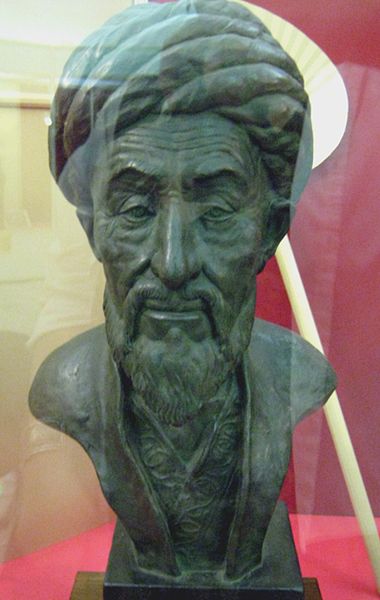<Back to Index>
- Chemist Jacobus Henricus van't Hoff, 1852
- Painter Isaac Ilyich Levitan, 1860
- Shah of the Timurid Dynasty Shāh Rukh Mīrzā, 1377
PAGE SPONSOR

Shāhrukh Mīrzā (Persian: شاه رخ ميرزا - Šāhrukh Mīrzā) (August 30, 1377 – March 12, 1447) was the ruler of the eastern portion of the empire established by the Central Asian warlord Timur (Tamerlane) - the founder of the Timurid dynasty - governing most of Persia and Transoxiana between 1405 and 1447. Shāhrukh was the fourth and youngest son of Timur and child of one of his Ghulam wives.
After Timur's death in 1405, his empire fell apart with various tribes and warlords competing for dominance. The Black Sheep Turkmen destroyed the western empire in 1410 when they captured Baghdad, but in Persia and Transoxiana Shāhrukh was able to secure effective control from about 1409. His empire controlled the main trade routes between East and West, including the legendary Silk Road, and became immensely wealthy as a result.
The devastation of Persia's main cities led to the cultural centre of the empire shifting to Samarqand in modern Uzbekistan and Herat in modern Afghanistan. Shāhrukh chose to have his capital not in Samarqand, but in Herat. This was to become the political centre of the Timurid empire, and residence of his principal successors, though both cities benefited from the wealth and privilege of Shāhrukh's court, which was a great patron of the arts and sciences.
His wife, Gowhar Shād, funded the construction of two outstanding mosques and theological colleges in Mashhad and Herāt. The Gowhar - Shād - Mosque was finished in 1418. The mixed ethnic origins of the ruling dynasty led to a distinctive character in its cultural outlook, which was a combination of Persian civilization and art, with borrowings from China, and literature written in Persian as well as Turkic and Arabic.
During Shah Rukh's rule, relations between the Timurid state and the Ming China of the Yongle and his descendants normalized, as compared to the era of Timur and the Hongwu Emperor, who almost started a war (which was averted only due to the death of Timur). Chinese embassies, led by Chen Cheng, visited Samarqand and Herat several times in 1414 - 1420, while a large embassy sent by Shah Rukh (and immortalized by its diarist, Ghiyāth al-dīn Naqqāsh) traveled to China in 1419 - 1422. Shāhrukh died during a journey in Persia and was succeeded by his son, Mohammad Taragae Uluğ Bēg, who had been viceroy of Transoxiana during his father's lifetime. Shāhrukh artistic younger son, Bāysonḡor (1397 – 1433),
who never had a vice-royal position, but played an important part in
his father's government in Samarqand, pre-deceased his father, perhaps
due to overconsumption of alcohol.